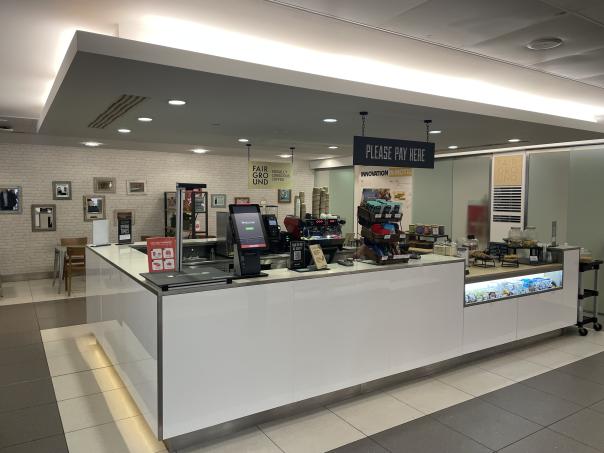
David Foad: Firstly, can you tell us about your background?
Sergii Khomenko: I started my career as an IT engineer and before founding Autocanteen, together with Rosty Kerei, I had been providing consulting services to e-commerce retailers.
DF: How did you come up with the idea of Autocanteen?
SK: In 2018 the idea first came up in a staff restaurant at one of the companies I was working with while we were thinking about whether the manual process of checkout could be automated with the new technologies available, as it seemed a very monotonous process for the 21st century.
DF: Can you explain how the concept was developed?
SK: We started experimenting, simply out of curiosity, with computer vision and machine learning to identify various types of food products and by 2020 we had a working prototype which we wanted to seek the opinion of the market about. One of the largest catering companies reached out to us and soon after initial trials of Autocanteen were introduced into a number of sites.
DF: How does it work in operation?
SK: The best analogy is to think of it like supermarket self-checkout. Customers select their meal items – portions of food, drinks and retail items - and then take their tray to one of the checkout points. They place it under an overhead scanner which uses AI and computer vision to identify everything on the tray and then accepts payment via bank card, stored value car or phone app.
For the operator the advantage is that you need just one staff member to look after multiple checkout points, the software identifies items with 98% accuracy and the average transaction time is ten seconds. For the customer there is no queueing, speed of service and convenience, and also less incentive to get their meals elsewhere, which can increase revenue.
DF: Can you identify a breakthrough moment for the company?
SK: The first couple of years have been full of breakthrough moments as we have refined the solution for our clients’ operations. The primary goal in the early days was to achieve a commercially acceptable level of precision in identifying and de-composing the food items on the tray.
I believe the breakthroughs we have achieved have been of real significance to the food service industry. They have enhanced efficiency, reduced errors, and streamlined processes involving tray-based food items, whether in restaurants, cafeterias, or other food-related settings.
DF: How big is the company now? Can you share any figures about workforce numbers, revenue, client numbers?
SK: We’re still very much a start-up, however our terminals process thousands of transactions daily on the premises of B&I sites such as banks, consulting companies, factories, defence sites, and others. Currently more than 100 Autocanteen terminals are live in the UK, Ireland, the Czech Republic and in Estonia.
DF: What is your sales pitch to any potential catering client about the benefits of working with you?
SK: The benefits include much faster transaction processing, on average interaction with a terminal before payment is only two or three seconds. Operations teams can benefit from less involvement in the processing as only one member is needed to oversee the whole checkout section instead of everyone keying transactions on tills at peak times. This allows the rest of the team to focus on better customer service. Customers using Autocanteen self-checkout terminal enjoy no queues, for instance at one of the sites we process 20 transaction per minute.
DF: Can you provide some figures about the time and manpower savings achieved by Autocanteen, as well as the additional sales potential?
SK: We just recently prepared a case study from one of the sites for their anniversary since opening and we helped to:
- Process over £1m in transactions
- Save 443 hours of queuing
- Save 1,320 days of labour on checkout
- Gain an additional 20% of revenue as customers aren’t afraid of being stuck in peak time queues and are not going elsewhere for their meal
DF: Where across the public sector do you see the potential for this sort of technology?
SK: Most of the high traffic sites serving meals would benefit from the self-service checkout model, just like most supermarkets do, so I would see it working well in hospitals, universities, schools, defence and other government sites.
DF: Which are some the clients that have already started using the Autocanteen model?
SK: We’re proudly working with some of the leading names in catering and hospitality, including Compass Group, Aramark, Delirest [formerly part of Compass Group and operating B&I sites in Hungary, the Czech Republic, and Slovakia], and others.
DF: What future developments of the system can you see coming?
SK: We’re constantly listening to our customers and incrementing their feedback into our roadmap for the Autocanteen solution. Each environment - from B&I to entertainment parks to defence – has its own special needs and we’re eager to be able to support each of them. Our bank of products and meals knowledge goes through constant improvement as the terminals see a large number and variety of new additions daily.